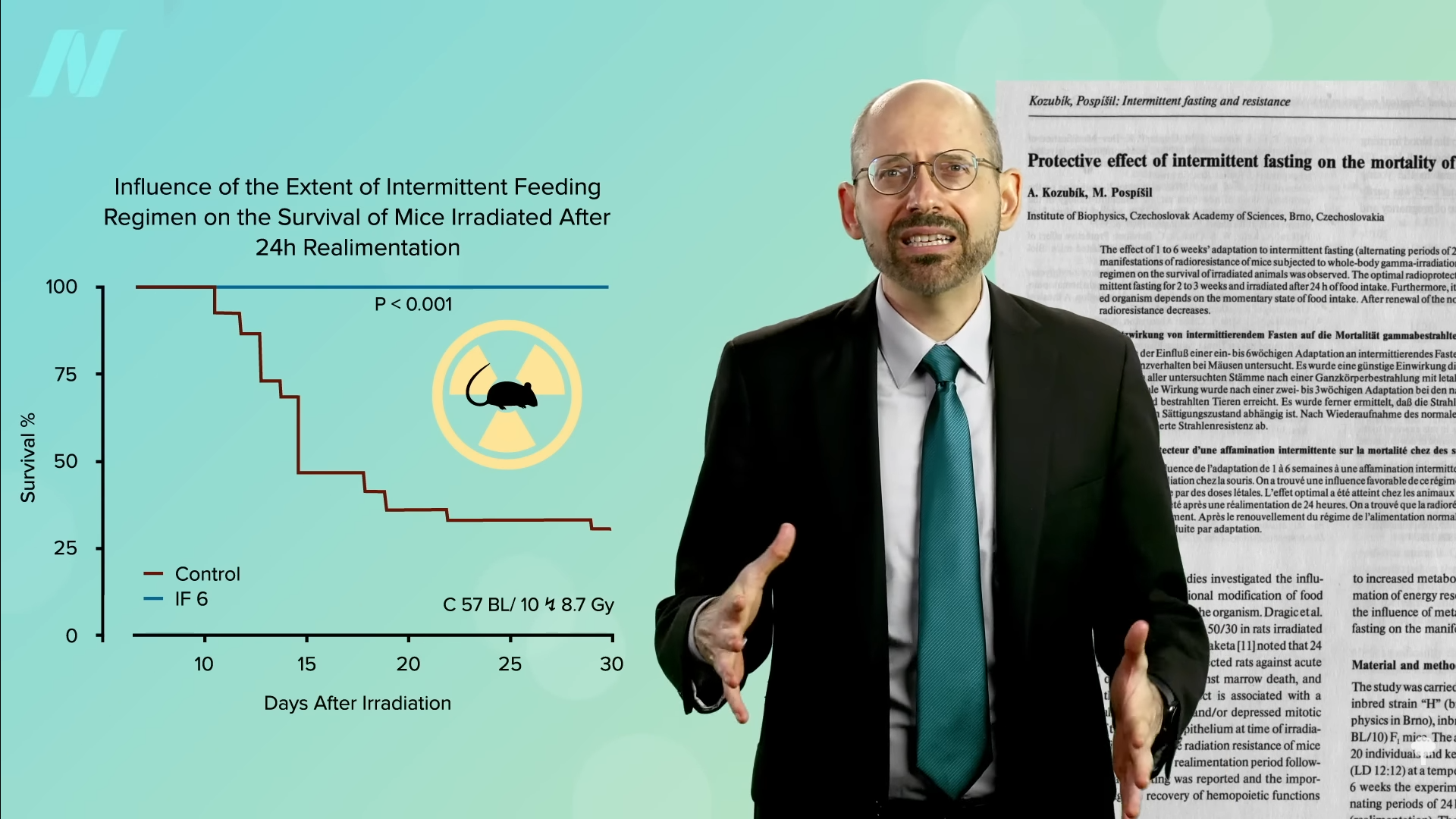Where did the idea of therapeutic fasting come from?
The story of life on Earth is a story of starvation. Ash from massive volcanoes and asteroids blocked out the sun, which killed the plants, which then killed almost everything else. As Darwin pointed out: “Thus, from the war of nature, from famine and death, the most exalted object which we are capable of conceiving” arose—namely, us.
“Among apes, humans are particularly well adapted to prolonged fasting.” Evolving in a context of scarcity is believed to have shaped “our exceptional ability to store large amounts of energy [calories] when food is available.” Of course, nowadays, our ability to easily pack on pounds is leading to modern diseases, like obesity and type 2 diabetes. But, without the ability to store so much body fat, we may not have made it to tell the tale.
Scarcity wasn’t just caused by the asteroids millions of years ago. “All of Upper Egypt was dying of hunger,” reads an inscription on an Egyptian tomb from about 4,000 years ago, “to such a degree that everyone had come to eating his children…” Just hundreds of years ago, “[p]arents killed their children and children killed parents” and ate them, and “the bodies of executed criminals were eagerly snatched from the gallows.” Hunger wiped out as many as two-thirds of the population of Italy and one-third of the population of Paris. So, we don’t have to go back to ancient history. “Even the most secure and affluent populations of today need only trace their history back a short distance to find evidence of famines that would have impinged on their forebears.” For example, there have been nearly 200 famines in Britain over the last 2,000 years.
Now, we tend to be suffering from too much food, which carries its problems, but “what about the consequences of not ever starving?” This was a question raised nearly 60 years ago. If our physiology is so well-tuned to periodic starvation, by eliminating that, might we be harming our overall well-being? We just didn’t know.
The lack of research in the area of starvation was attributed to the “difficulty of securing willing human subjects.” So, what little we had may have come from unwilling subjects. Physicians within the Warsaw Ghetto made detailed accounts before they succumbed, and Irish Republican Army prisoners in Northern Ireland starved themselves to death after hunger striking up to 73 days. However, starvation isn’t necessarily the same as fasting, an issue raised in medical journals more than a century ago. “Starvation is normally a forced, mentally stressful, and chronic condition, whereas [therapeutic] fasting is voluntary, limited in duration, and usually practiced by people in adequate nutritional state”—that is, individuals who start with adequate nutrition.
Therapeutic fasting? Where did we get this idea of fasting therapy? “Fasting for medical purpose”? As I discuss in my video The Benefits of Fasting for Healing, it may have originally arisen out of the observation that when people get acutely ill, they tend to lose their appetite, so maybe there’s something in the wisdom of our body to stop eating. That’s presumably where the whole “starve a fever” folklore came from.
There was a sense that “fasting affords physiologic rest” for the body—not just for the digestive tract, but throughout—allowing the body to concentrate on healing. It was evidently “an open secret” that veterinarians used to hospitalize dogs with “various dyspeptic and metabolic ailments” only to fast them back to health. So, the theory went, maybe it might work for people, too.
Beyond just freeing up all the resources that would normally be used for nutrient digestion and storage, there’s a concept that, during fasting, our cells switch over to some sort of protection mode. Why would fasting reduce free radical “oxidative damage and inflammation, optimize energy metabolism, and bolster cellular protection”? It’s the “that which doesn’t kill us makes us stronger” concept known as hormesis. That’s kind of the opposite of the “let the body rest” theory. It’s more like “let the body stress.” The stress of fasting may steel the body against other stresses coming our way. This was demonstrated perhaps most starkly in a set of cringe-worthy experiments in which mice were blasted with Hiroshima-level gamma radiation sufficient to kill 50 percent within two weeks, but of the mice who had first been intermittently fasted for six weeks before, not a single one died, as you can see in the graph below and at 4:33 in my video.

It’s these kinds of dramatic data that led to extraordinary claims like therapeutic fasting could drive half of all doctors out of business. You don’t know until you put it to the test, and we’ll explore that next.
There’s been an explosion in research interest in fasting over the last few years. Stay tuned for The World’s Largest Fasting Study.
Due to my work on How Not to Diet, I have discussed several studies in videos that are already available to you on fasting and weight loss. Check out the related posts below.







